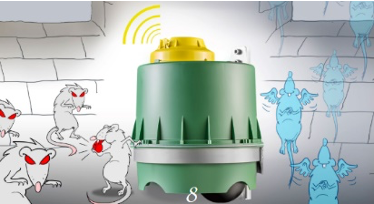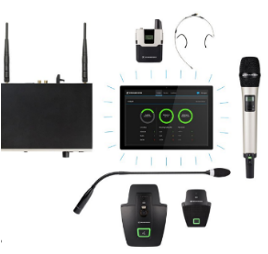Did you know ... ?
... that DECT was the second ever technology to be standardized by ETSI. The first was GSM
... that when you call emergency services, very often the person you reach is using a DECT Phone or headset
... that when your flight is coming into land, your flight control centre may be communicating with DECT
... that after landing that the ground staff may be communicating with the cockpit on a DECT system
... that your vital signs are being tracked in a hospital and stats are often being sent via DECT to nurses and doctors
... that if you suffer from epilepsy, DECT can ensure that the responder is alarmed immediately
... that power plants with quality of service requirements for voice & data rely on DECT for internal communications system
... that the Police may be communicating with DECT at public demonstrations
... that your favourite football teams' referees are more than likely using DECT to communicate with the other officials



DECT and ULE are all around us, delivering services we rely on every day. These characteristics are also driving a safer,
more reliable Internet of Things. Here are a few other facts that may interest you about DECT:
Market Size Matters: DECT is found in around 100 million European home gateway and almost 50 million new residential systems are sold each year. Since the
migration of the DECT base station into the broadband home gateway, both HD
Voice and Ultra Low Energy battery powered sensor networks are supported by one
and the same radio. Indeed, DECT and ULE now feature in many voice activated
services.
Diverse: Cutting
the cord not only applies to telephony. DECT and ULE are key wireless components
in demanding environments, such as Blue Light emergency services, Industrial,
Smart City, Smart Home and Building, Healthcare, programme making and special events (Broadcasting).
High density environments such as warehouses may also rely on the self-configuration capabilities
of DECT and ULE to efficiently and reliably control up to 1,000 clients per base
station. In tomorrow’s smart cities even the rat population
and the potential for the spread of harmful diseases can be controlled by ULE .



DECT for professional environments: DECT is also present call centres, schools,
hospitals and campuses that use wireless headsets, microphones and corporate
conferencing systems. No other technology can support such a high density of
live users without drop-outs or interference.
Mission Critical DECT’s intelligent dynamic channel allocation ensures that every connection is the best connection available, essential
for emergency Blue Light services and for a multitude of outdoor applications.
Looking Ahead: With feature
requirements like ultra-low latency (<1ms) and high reliability, there are
many new potential vertical markets for DECT and ULE with more emphasis placed
on speed of reaction and precision.
Professional
Audio: Wireless microphones with extremely low latency, wireless
speakers with long range, even Assistive Listening Systems are all part of the
current and future diversity of DECT.
Industrial: The
factories of the future will profit from a local area 5G technology with high
Quality of service for voice and data applications, for “wired-like” lower
latency and faster response times.


